Have you ever wondered how the world’s stealthiest predators turn a simple hill into the perfect hunting tool? Big cats are masters of using every inch of their environment—and nothing beats a good vantage point. From treetop leopards to mountain-loving snow leopards, these felines prove that sometimes the best way to catch a meal is by thinking… up! Let’s climb up and peek into the clever, gravity-defying world of the big cats that use elevation to outsmart their prey.
Leopards: The Masters of Tree Ambushes

Leopards are basically the ninjas of the cat world. Their favorite trick? Hauling themselves—and even their dinner—way up into tree branches. From these leafy perches, they not only dodge bigger predators like lions and hyenas, but also spy on unsuspecting prey down below. A sleeping impala under a shady tree might have no clue a hungry leopard is just a leap above! Watching a leopard climb is like witnessing a silent acrobat show. Their strong, muscular limbs make scaling vertical trunks look easy. And when it’s time to pounce, they drop in with the grace of a falling feather—except for the prey, it’s more like a thunderbolt!
Snow Leopards: Kings of the High Himalayas
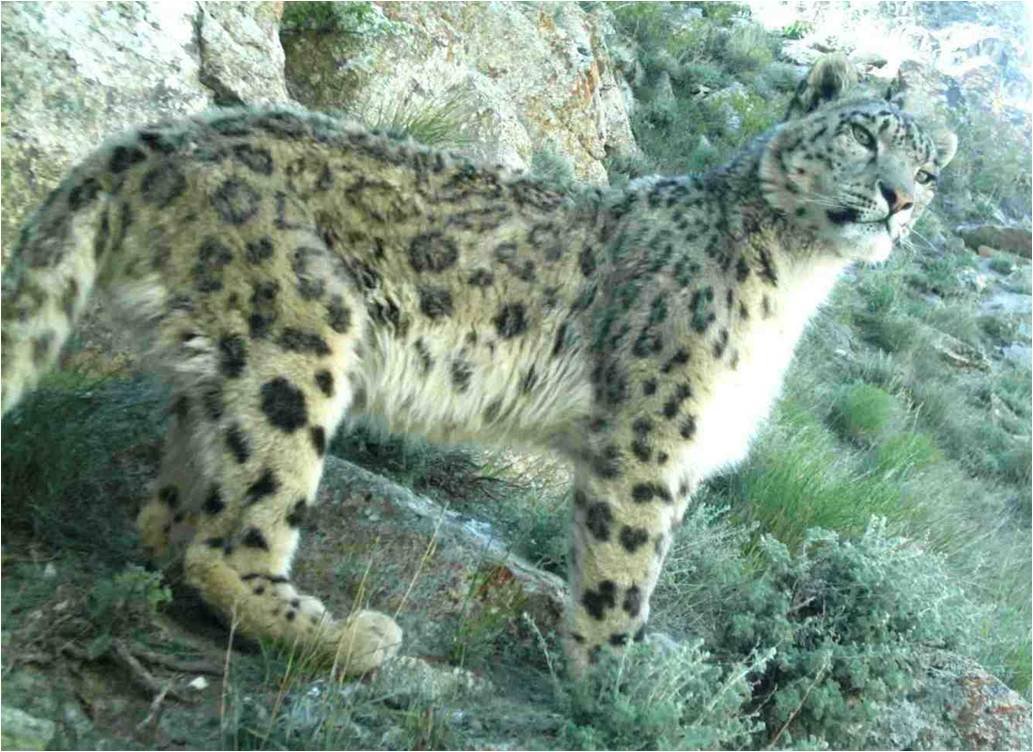
Snow leopards live where the air is thin and the ground is steep—think rocky ledges and snowy cliffs, thousands of feet above sea level. While it might seem lonely up there, these elusive cats have an advantage: a bird’s-eye view of everything below. Prey like blue sheep or ibex can barely hide from those sharp eyes. Snow leopards use overhanging rocks as natural blinds, waiting motionless for hours until the perfect moment strikes. When it’s go-time, they launch themselves down slopes so steep, it’s dizzying! Their extra-long tails help them balance as they chase prey across vertical terrain.
Mountain Lions: Canyon Stalkers and Cliff Commanders

Mountain lions (also called cougars or pumas) are built for high places. These cats rule over North and South America’s rugged canyons and forested mountains. Their favorite hunting strategy? Perching on rocky ledges or ridges to survey the land below. With their keen eyesight, they can spot a deer or rabbit from hundreds of feet away. Sometimes, they’ll follow narrow game trails along cliffsides, using boulders for cover. When the time’s right, they silently creep closer, then leap down with breathtaking speed and power—like a furry superhero swooping in to save (or, well, catch) the day.
Jaguars: Riverbank Watchers with a Height Advantage
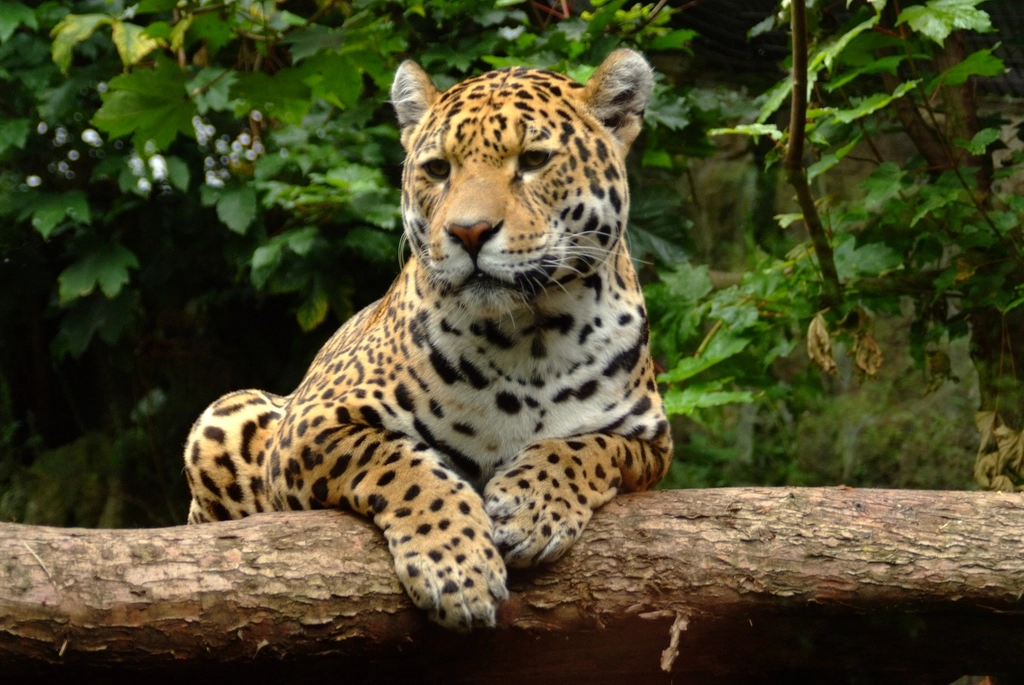
You might expect jaguars to lurk in thick jungle shadows, but they’re just as likely to climb trees along riverbanks for a better angle. In South America’s rainforests, jaguars often sit high above the water, looking for capybaras, caimans, or fish. From this elevated seat, they can see which animals are coming and going, and plan a surprise attack. Unlike leopards, jaguars are heavier, but their enormous strength lets them scale trees and even drag large prey up with them. It’s a jungle version of “king of the castle,” and the jaguar almost always wins.
Cheetahs: Savannah Surveyors on Termite Mounds
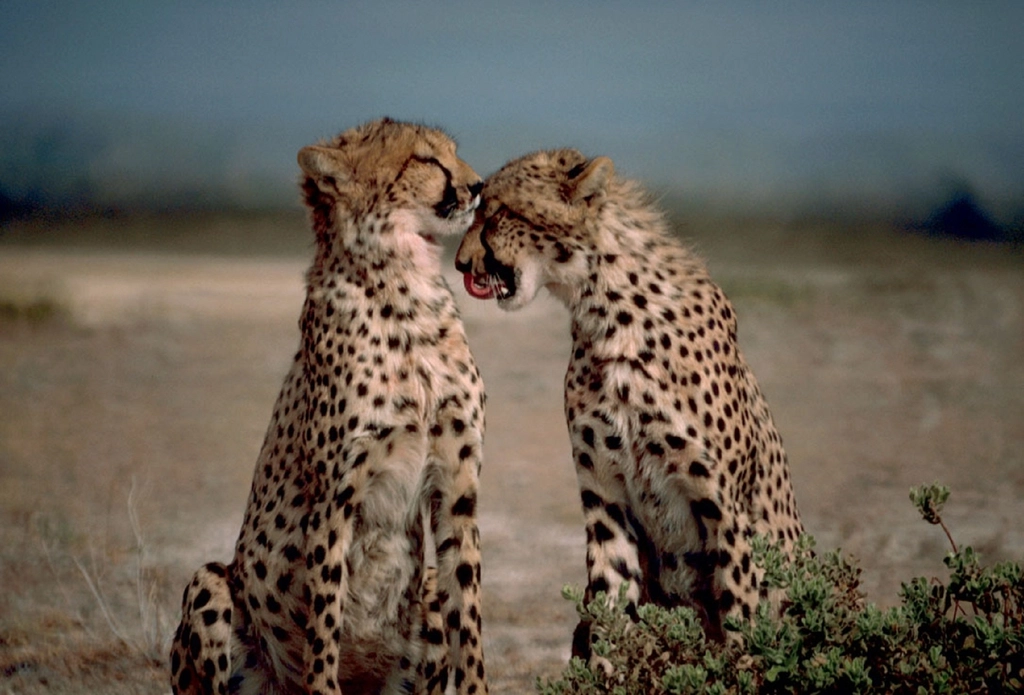
Cheetahs might be famous for their speed, but they’re just as clever as climbers—especially when it comes to termite mounds. These big cats often hop onto these tall, hard earth structures to get a better look across the grasslands. From this mini-mountain, a cheetah can scan for herds of gazelle or spot lurking competitors like lions. It’s like using a lifeguard’s chair in the wild! Once they pick a target, cheetahs slip down from their lookout and use the open terrain to launch their legendary lightning sprint.
Tigers: Forest Giants in the Canopy Shadows
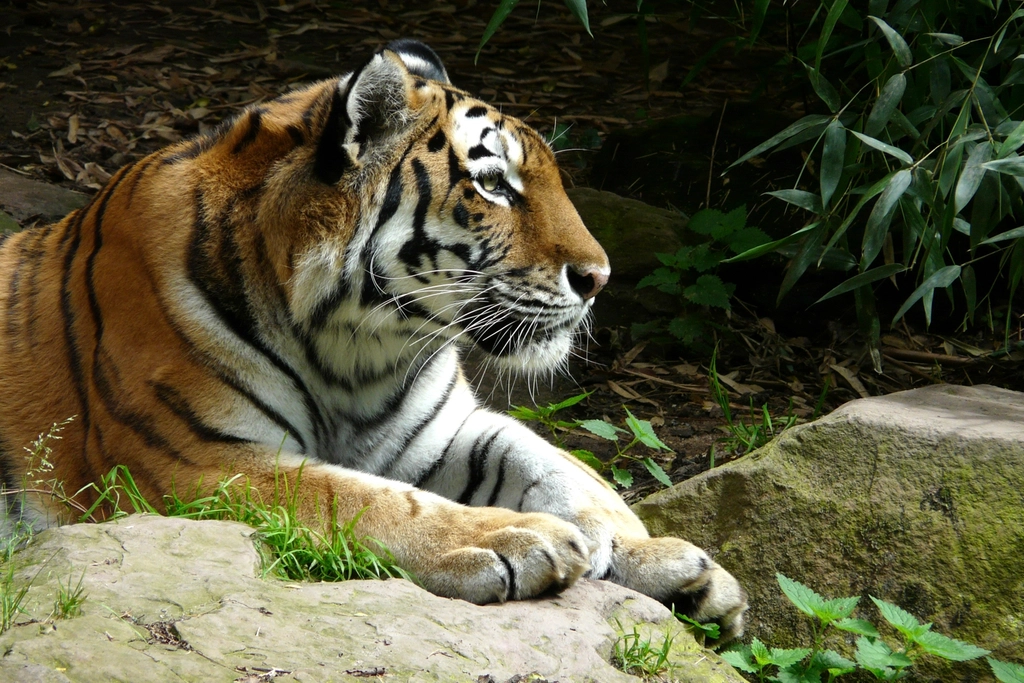
Tigers aren’t natural tree climbers like leopards, but they know how to use slopes and fallen logs to their advantage. In dense forests, tigers often prowl along ridges or elevated trails, silently watching for deer or wild boar below. They blend so perfectly with the undergrowth that prey might not spot them until it’s too late. Sometimes, tigers even use old trees as hiding spots, crouching behind roots or climbing low branches to ambush from above. Every step is calculated—no wasted movement, just raw, silent power.
Lions: Savanna Sentries on Kopjes

Lions are the rulers of the African savanna, and they love high ground. Kopjes—those big rocky outcrops that look like nature’s castles—are prime lion real estate. From atop a kopje, a lion pride can scan for miles, watching for herds of wildebeest, zebra, or even rival predators. Young lions especially enjoy climbing up to play and nap in the sun while adults keep watch. When the hunt is on, lions use the height to plan their approach, sometimes splitting up to circle prey. The vantage point turns these powerful cats into unbeatable strategists.
Clouded Leopards: Jungle Gymnasts of the Canopy
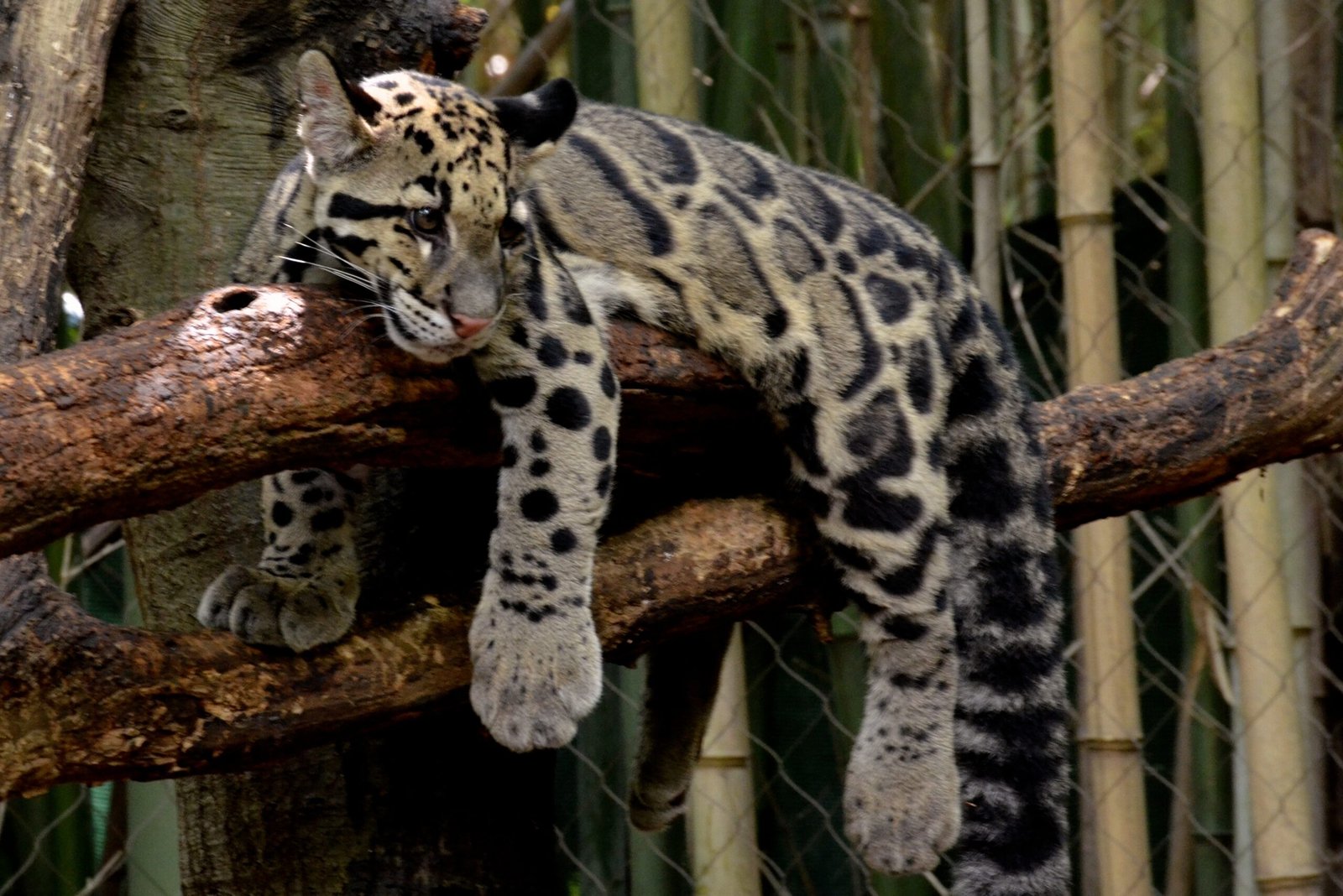
Clouded leopards are tree-dwelling wonders with tails as long as their bodies and paws like suction cups. These cats spend almost their entire lives above ground, walking along branches as if they were tightropes. From their leafy thrones, they can spot monkeys, birds, or small deer far below. Clouded leopards have special ankle joints that let them climb headfirst down trees—a trick few other cats can manage. If prey comes close, they’ll drop down in a blur, snatching a meal before anyone even knows what happened.
Servals: High-Grass Hunters on Watch
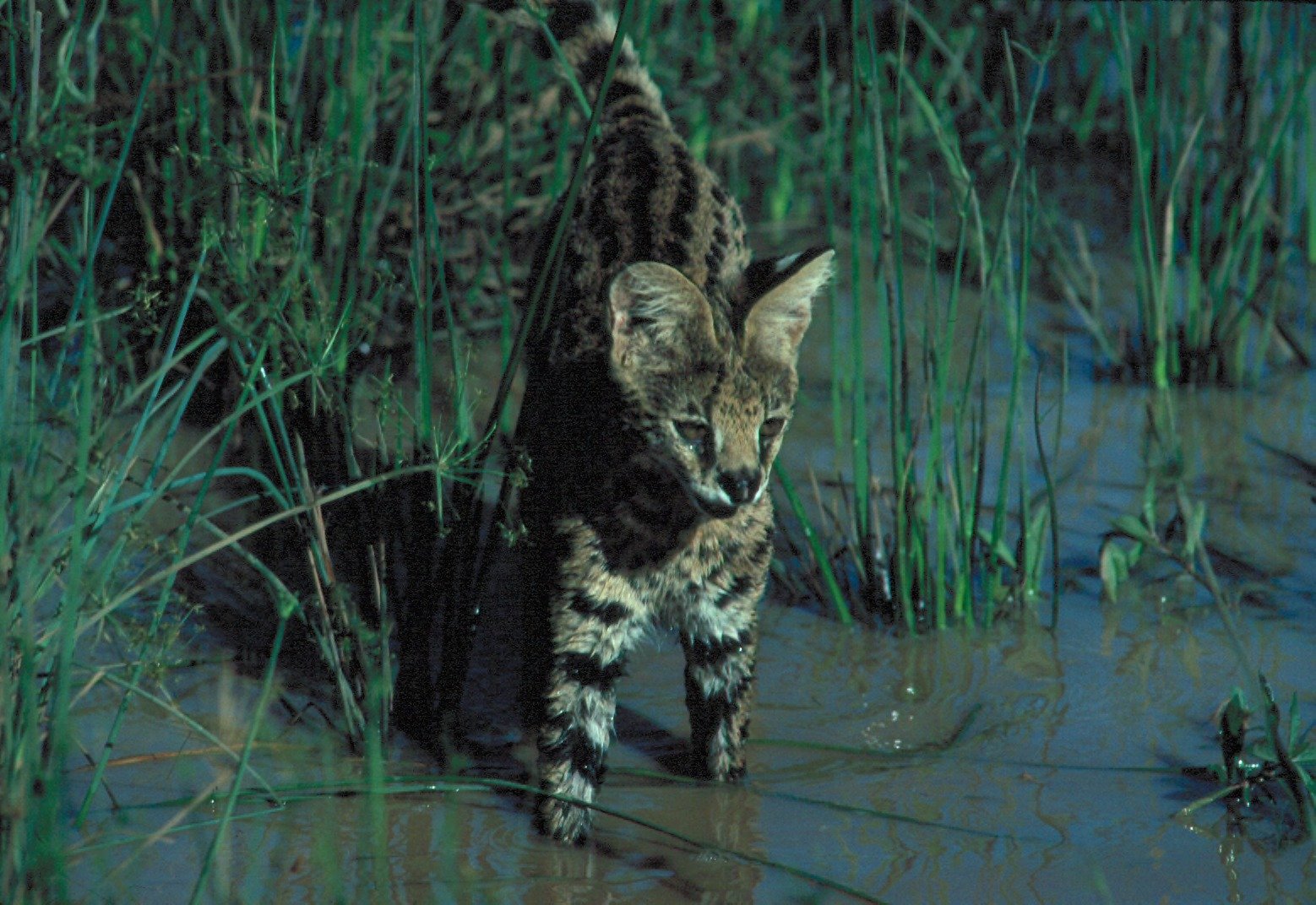
Servals might be smaller than other big cats, but they’re no less clever. These African felines use tall grass and termite mounds to their advantage. By leaping up onto mounds or small rocks, servals can spot rodents and birds hiding below. Their huge ears swivel like satellite dishes, picking up the tiniest sounds. Sometimes, they’ll even spring straight up, pouncing on prey from above—like a furry jack-in-the-box! It’s a surprising and effective way to catch a meal in the thickest grass.
Eurasian Lynx: Silent Stalkers of the Highlands
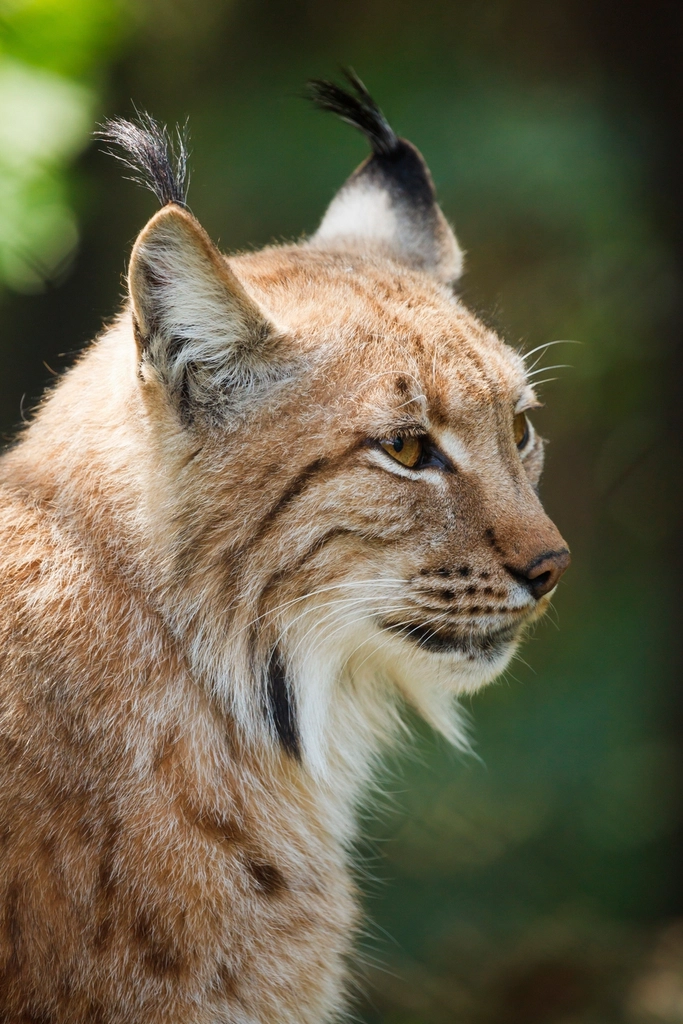
The Eurasian lynx prowls the forests and mountains of Europe and Asia, using rocky slopes and fallen logs as natural ambush points. These cats are patient hunters, often sitting quietly on a ledge or in thick brush, waiting for a deer or hare to wander by below. Their tufted ears and thick fur help them blend into their chilly, rugged world. With a quick, sure-footed leap, they can cover surprising distances—making heights their secret weapon. It’s a quiet, almost ghostly form of hunting that leaves prey with little warning.
Caracals: Acrobatics in the African Bush
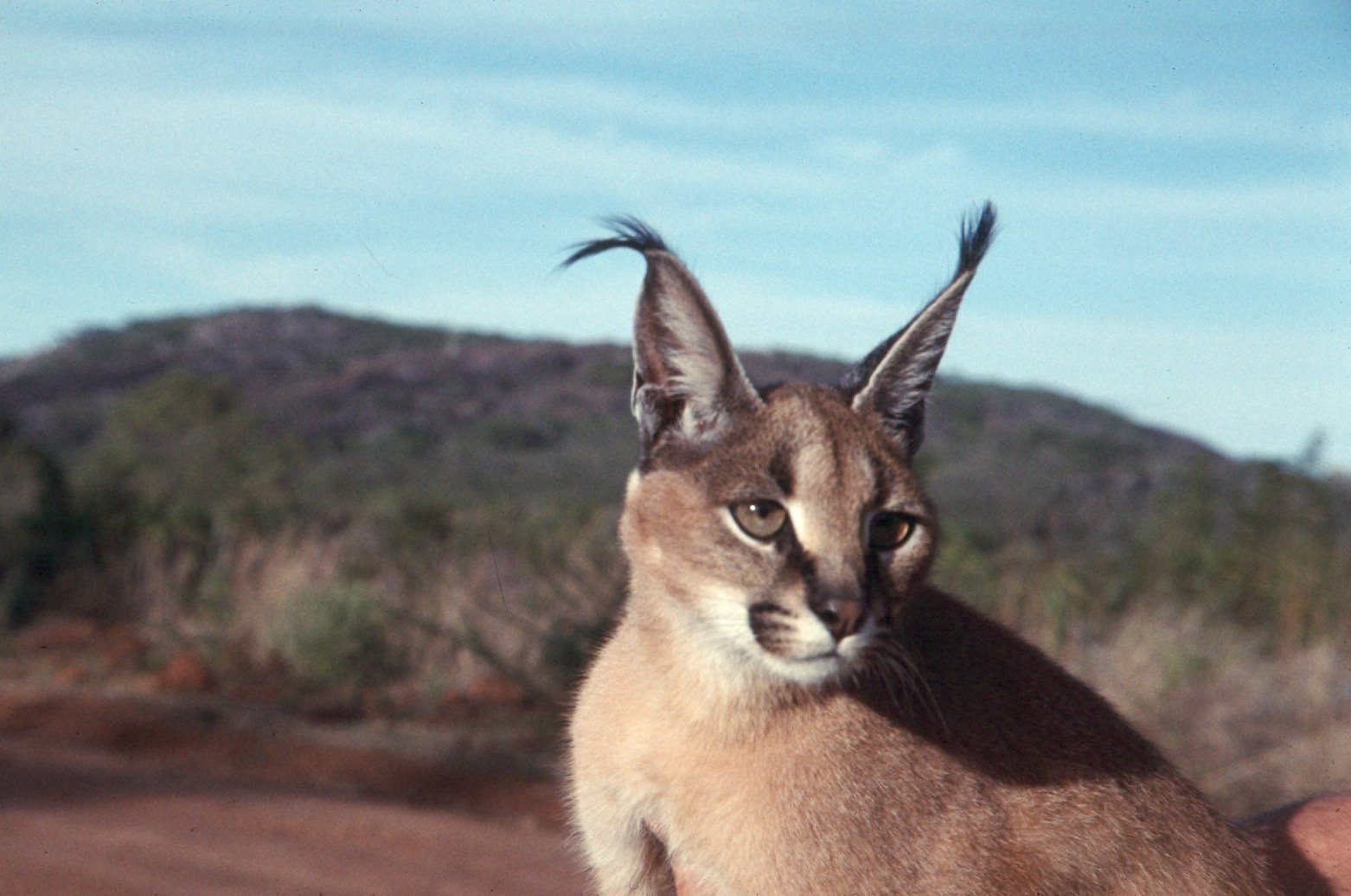
Caracals are known for their incredible jumping ability, but they’re just as skilled at using rocky outcrops and termite mounds for elevation. With their long legs and tufted ears, caracals often climb up to scan for birds or small mammals. When a target appears, these cats can leap straight up—sometimes over 10 feet in the air—to snatch prey right out of the sky! Their agility makes them some of the most acrobatic hunters in the feline world. Watching a caracal in action is like seeing a living spring in motion.
Fishing Cats: Streamside Stalkers with a View
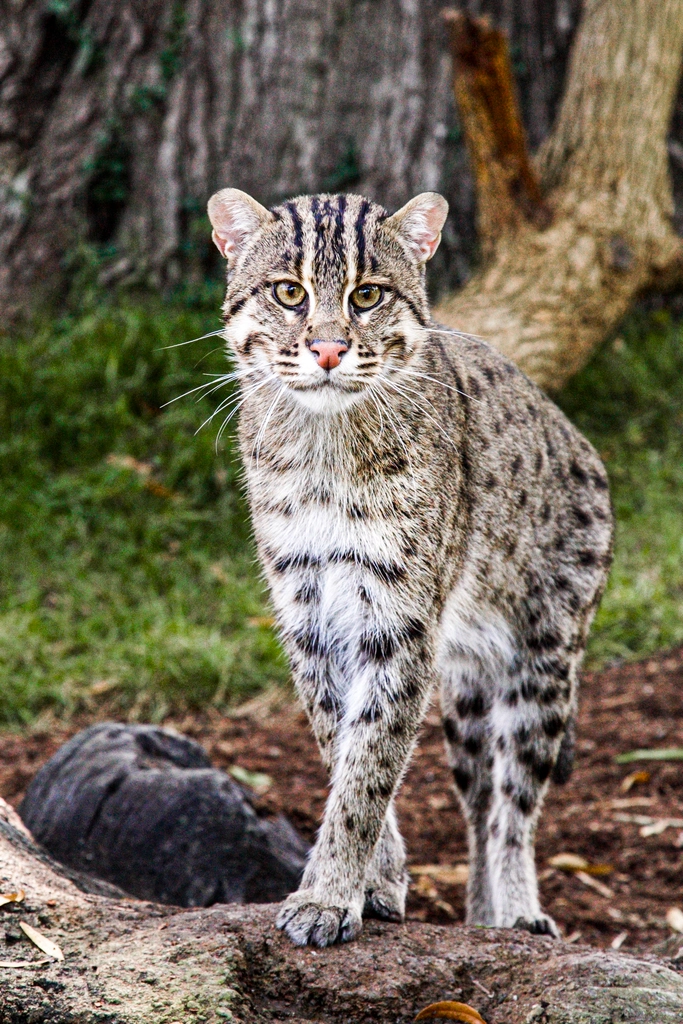
Fishing cats are wetland specialists found in South and Southeast Asia, often hunting along riverbanks and marshes. They use elevated muddy banks, rocks, or fallen logs to get a better angle on fish and amphibians below. With their partially webbed feet, fishing cats are excellent swimmers, but they know a good lookout spot can mean the difference between a snack and an empty belly. Sometimes, they’ll perch above the water, waiting for the ripples that signal a fish’s arrival—then dive in with a splash!
Pallas’s Cats: Stealthy Sentinels of the Steppe

Pallas’s cats look like grumpy, fluff-covered gremlins, but their hunting strategy is pure genius. Living in the cold, rocky grasslands of Central Asia, these cats use boulders, hills, and even marmot burrows to get a higher view of their surroundings. Their thick fur helps them blend into the landscape while they wait for pikas or voles to appear. With a quick dash, they can zip down from their lookout and snatch a meal before it’s even noticed. It’s like hide-and-seek—except the stakes are dinner.
Margays: Nighttime Navigators of the Treetops
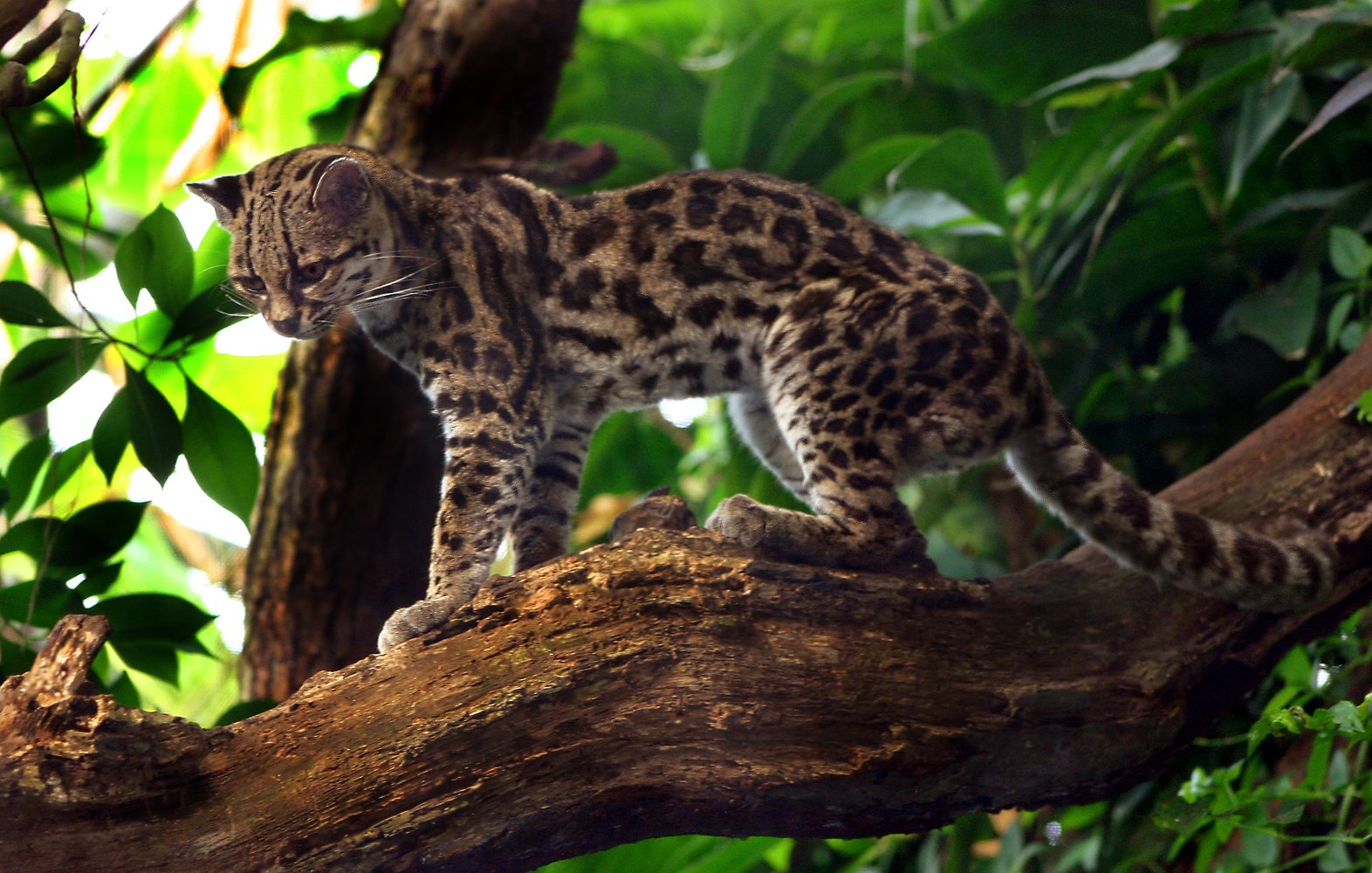
Margays are small, spotted cats famous for their talent in the trees. Unlike most cats, margays can rotate their ankles to climb headfirst down trunks—just like a squirrel! They spend their nights high up in the rainforest canopy, looking for birds, eggs, and small mammals. By staying above ground, margays avoid larger predators and get a better look at what’s moving below. Their big, expressive eyes help them see in the dark, turning every night into a high-wire hunt.
Bobcats: Ridge Runners of North America
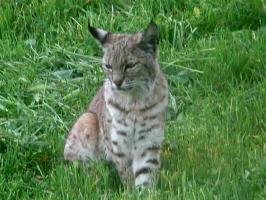
Bobcats are adaptable hunters found from forests to deserts, but they especially love using ridges and rocks to their advantage. A bobcat might crouch on a hillside, peering down at rabbits or quail moving through the brush. They can stalk quietly along elevated trails, using every dip and rise for cover. Their camouflage makes them nearly invisible until they spring into action. For a hunter the size of a medium dog, using elevation is a big way to level the playing field.
Ocelots: Jungle Scouts on Fallen Logs

Ocelots prowl the dense forests of Central and South America, often using fallen trees and low branches as natural observation decks. These cats are excellent climbers, slipping along mossy logs to survey their territory for birds, rodents, or reptiles. Sometimes, ocelots will even sleep in the trees to avoid predators. Their gorgeous, dappled coats blend perfectly with the dappled sunlight of the jungle, making them invisible until they choose to strike.
Sand Cats: Dune Dwellers with a View

Sand cats might be tiny, but they’re fierce hunters of deserts and sandy plains. These little cats use natural rises in the sand—dunes and low hills—to get a better view of the sparse landscape. From a high spot, they can spot lizards, insects, or rodents scurrying across the sand. Sand cats have thick fur on their paws to protect them from the heat, letting them climb dunes that would burn other animals. They’re proof that even the smallest cats know the power of a good lookout.
Rusty-Spotted Cats: Miniature Climbers of the Forest Floor

Rusty-spotted cats are among the world’s tiniest wild cats, but don’t let their size fool you. In India and Sri Lanka’s forests, these pint-sized predators use fallen logs, rocks, and low tree branches to gain a height advantage over their prey. From these tiny platforms, they stalk mice, birds, and lizards, pouncing with surprising speed. Their small stature means they can fit into places larger cats can’t, turning the forest floor into their own personal fortress.
Jaguarundis: Riverbank Rovers on the Lookout
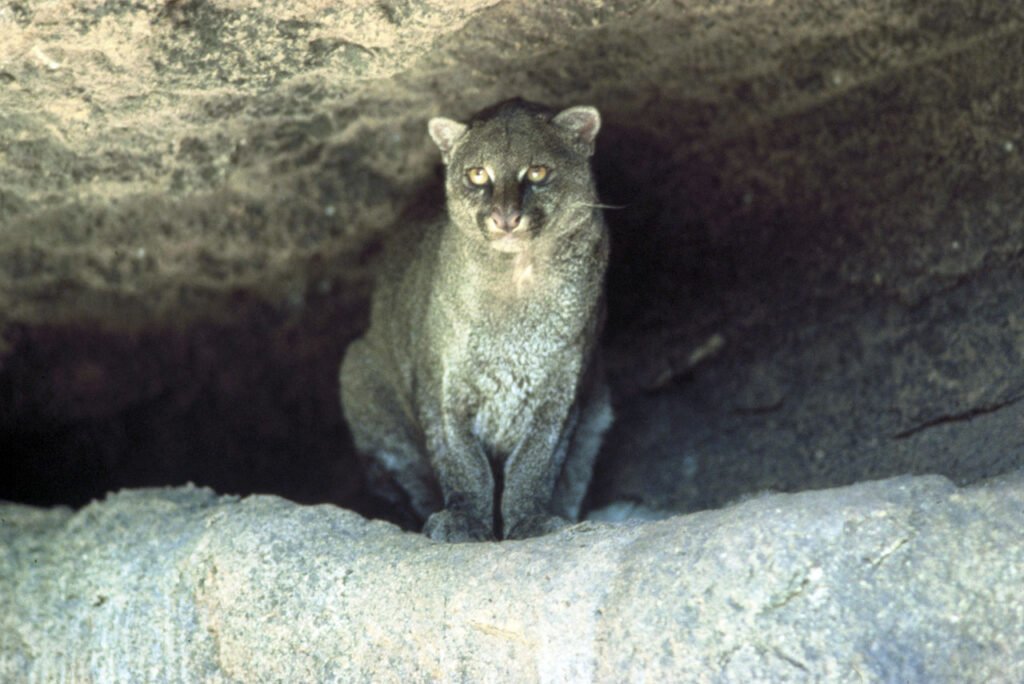
Jaguarundis might not look like your typical big cat, but their slender bodies and short legs are perfect for scrambling up riverbanks and low trees. In Central and South America, these cats use every available height—logs, rocks, or embankments—to get a better view of birds and small mammals. Jaguarundis are active during the day, so elevation helps them spot danger as well as dinner. Their curiosity and agility make them relentless explorers of their wild world.
Black Panthers: Stealthy Shadows in the Canopy

“Black panther” is just the name for leopards or jaguars with dark coats, but their hunting style is just as shadowy as their fur. These cats use trees and high ledges in forests and jungles to sneak up on prey. Their dark coloring helps them blend into the deep shade, making them nearly invisible from below. A black panther might wait hours on a branch for the perfect moment to strike—when it moves, it’s almost like the night itself has come alive.
Asiatic Golden Cats: Highland Hoppers of Southeast Asia

Asiatic golden cats are secretive hunters that roam the hills and forests of Southeast Asia. They love using rocky outcrops and slopes to watch for deer, birds, or rodents. Their golden-red coats blend with the forest floor, letting them move unseen. Sometimes, they perch on logs or rocks to listen and sniff the air for clues. If prey appears, they move with a smooth, flowing grace—like gold poured over stone.
Oncillas: Spotted Shadows on Mountain Slopes
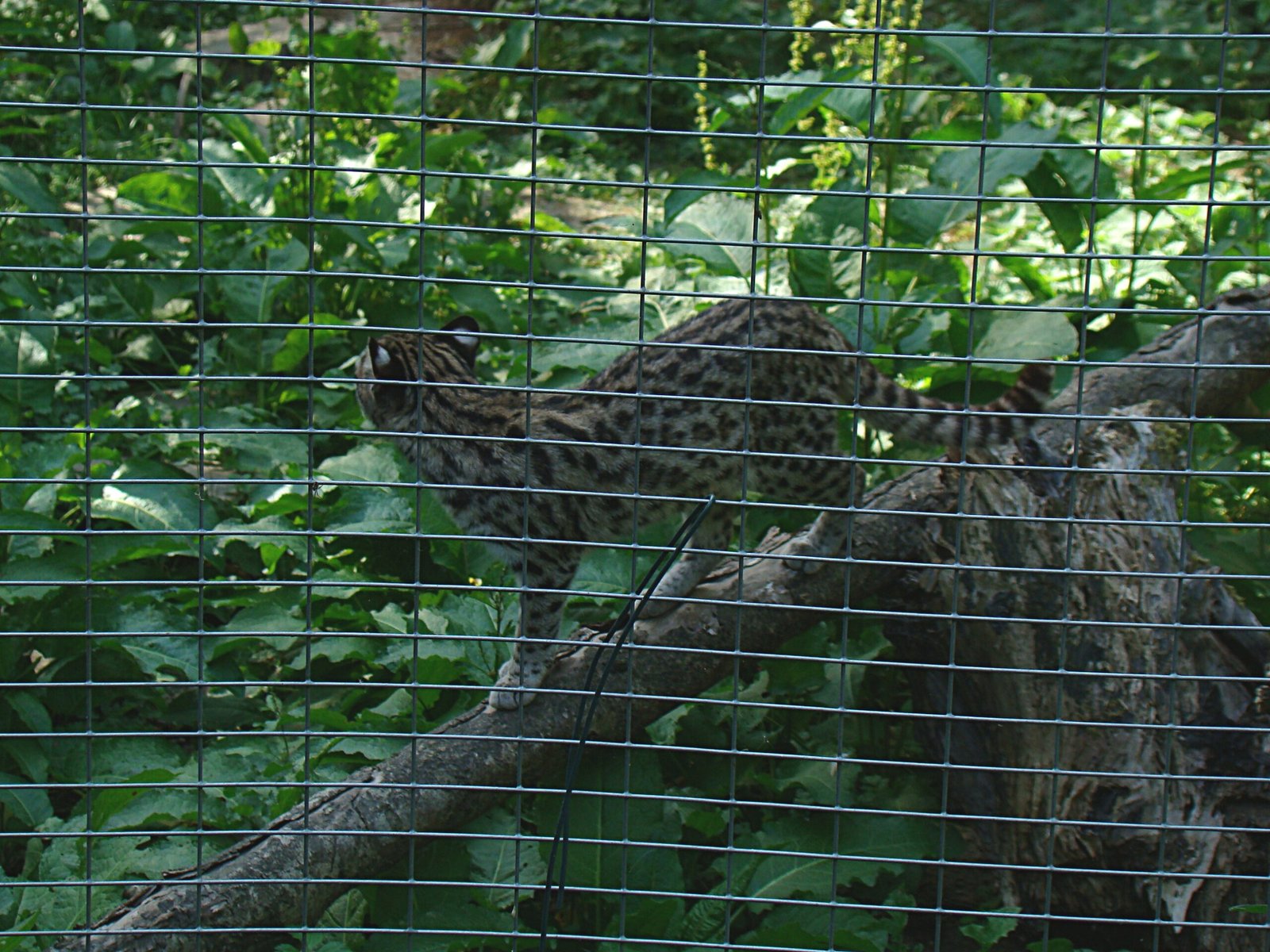
Oncillas are slender, spotted cats found in the cloud forests and highlands of South America. They use every slope, fallen branch, and mossy rock as a lookout. From these high points, oncillas scan for birds or small mammals. Their camouflage makes them nearly invisible among the shadows and dappled light. Being small means they can slip through dense undergrowth and leap between perches with ease—like tiny, living shadows.
Chinese Mountain Cats: Plateau Prowlers
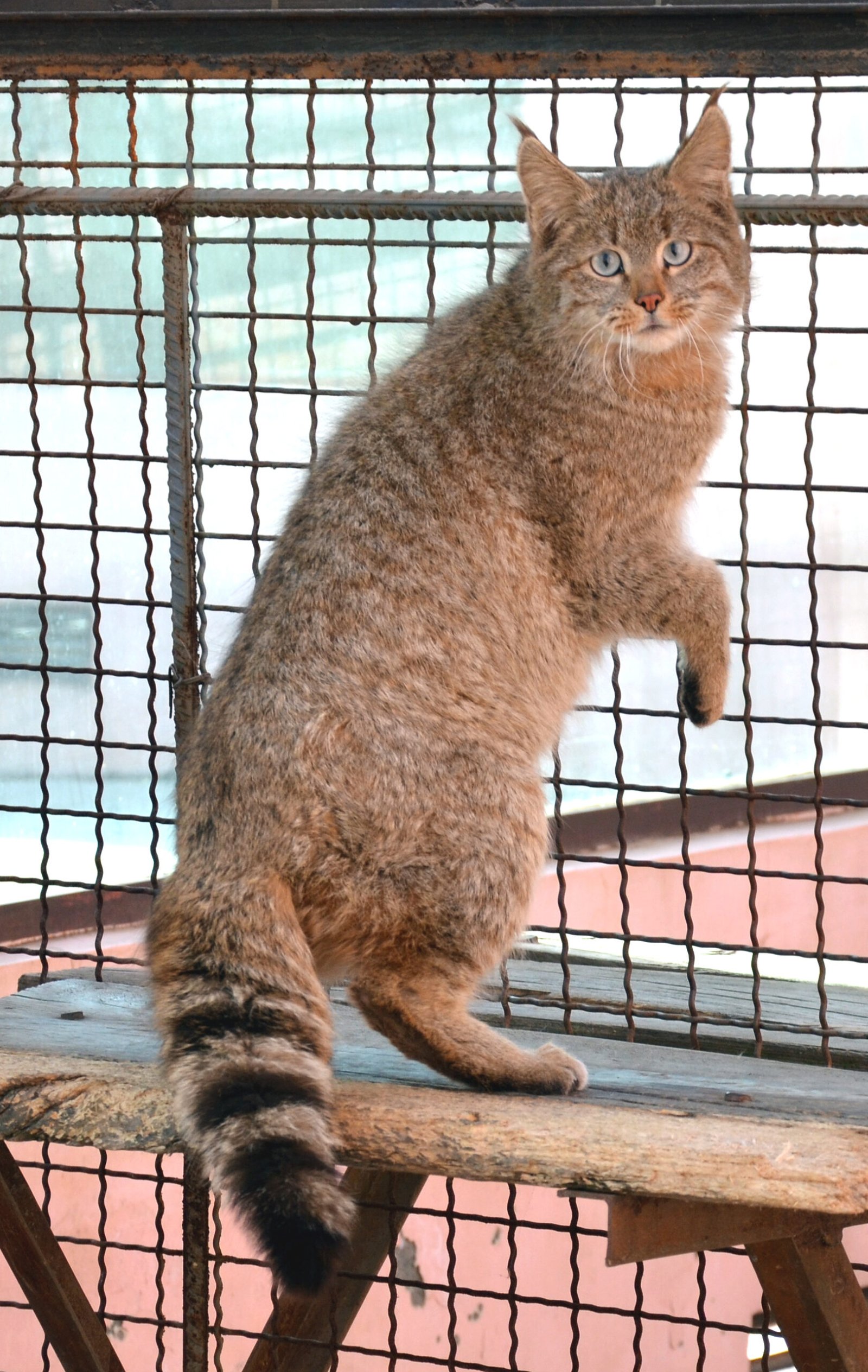
The rare Chinese mountain cat lives on the high plateaus and rocky outcrops of Tibet and western China. These elusive cats use boulders and grassy knolls to survey their wide-open domain. From these vantage points, they watch for pikas, rodents, and birds. Their thick fur keeps them warm in the chilly air, and their patience is legendary—they’ll wait for hours for the perfect shot at dinner. It’s a hard life, but the view can’t be beat.
Jungle Cats: Marshland Perchers with an Edge

Jungle cats might not be as big as some, but their love for high ground is just as strong. In wetlands and reed beds, they often use raised clumps of earth or fallen trees to spot frogs, birds, and rodents. Sometimes, they even climb into low branches to get a better look. Their long legs help them jump and balance in tricky terrain. For a jungle cat, a few extra feet off the ground can mean the difference between a successful hunt and an empty belly.
Flat-Headed Cats: River Sentries on Logs
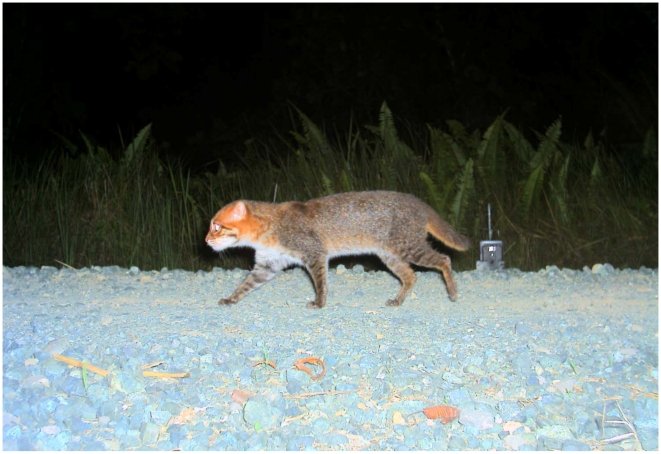
Flat-headed cats are rare and unusual, living along rivers and streams in Southeast Asia. They use logs and overhanging banks to peer into the water for fish, frogs, and crustaceans. Their flattened skulls help them see better while hunting, and they’re expert swimmers, too. By climbing up on logs, they get a clearer view of the action below—turning every riverbank into a feline fishing pier.
Geoffroy’s Cats: Pampas Pathfinders on Fence Posts

Geoffroy’s cats are small but bold, patrolling the grasslands and shrublands of South America. They often use fence posts, termite mounds, or low trees to keep an eye out for rodents and birds. With their spotted coats and slender bodies, they blend right in with the tall grasses. Geoffroy’s cats are mostly nocturnal, so their nighttime lookout posts help them avoid danger as well as spot a midnight snack.

Growing up traveling and experiencing new cultures and wonders, I have had a passion for nature, adventuring, photography, and videography. I am currently working towards a BSc in Biodiversity and Ecology at Stellenbosch University, and I hope to specialise in Marine Sciences one day.
Please send any feedback to Feedback@animalsaroundtheglobe.com






